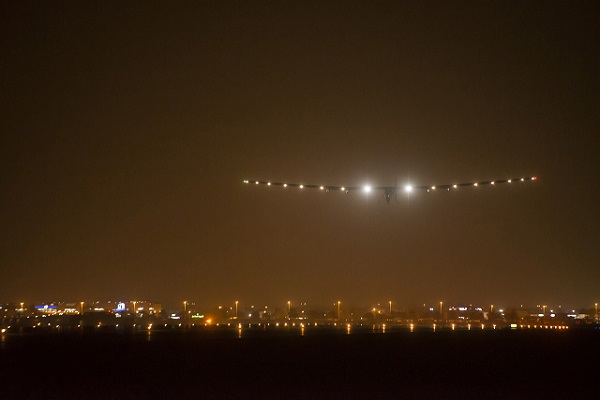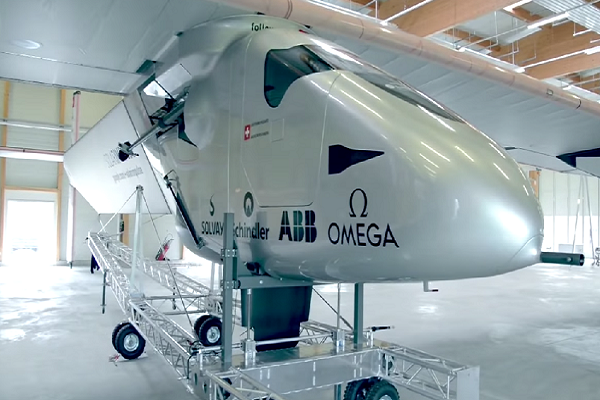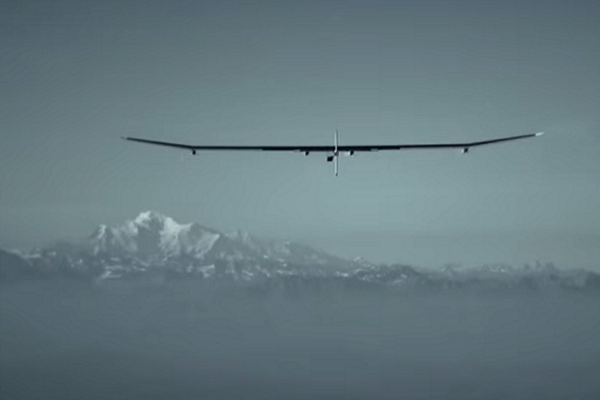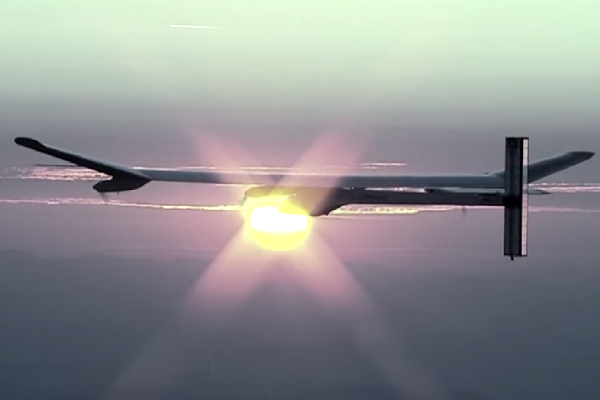Si2--a solar powered plane, created a historic milestone as it completed its first sea journey by crossing the Arabian Sea from Muscat, Oman to Ahmedabad, India.
Solar Impulse 2 has landed in India at the Ahmedabad airport and will be in the city for four days. The solar energy powered plane had left Muscat, Oman at 06.35 on March 10 and crossed the Arabian Sea to land in Ahmedabad at the Sardar Vallabhbhai Patel International Airport at 11:25 that night. The plane made the 1400 kilometre journey in 15 hours as it flew even after sundown using energy stored in its lithium polymer batteries.
Si2 as the air-craft is known as, is on a round-the-world journey and hopes to become the first fixed-wing aircraft powered by solar power to do so.
The plane is being piloted by Bertrand Piccard, who also set the world record to become the first person to circumnavigate the globe non-stop in a hot air balloon. Piccard hails from a family of pioneers as his grandfather Auguste Piccard was a balloonist and his father, Jacques Piccard an undersea explorer.
The co-pilot is André Borschberg, who is both an entrepreneur and an investor in the project. He is co-founder of Solar Impulse, which he started in 2003 with Piccard. The two men will share piloting duty during layovers.
The next leg of the plane's journey will take the Piccard-Borschberg team to Varanasi, UP.
JOURNEY
 (Source: REUTERS)
(Source: REUTERS)
As it travels 35,000 kilometers around the world, the Si2 will stop in 12 cities.
After Varanasi the plane will fly east to Mandalay in Myanmar and then on to Chongqing and Nanjing in China. After crossing the Pacific and landing in Hawaii, the pilots will fly across the U.S., with stopovers in Phoenix and New York City.
The team will then attempt to cross the Atlantic and halt in southern Europe or Morocco before finishing the journey in Abu Dhabi.
The actual flight days are just 25, but the course of the journey is roughly five months because organisers have planned public events for governments, schools and universities along the way.
THE PROJECT

Solar Impulse 2 is a long-range solar-powered aircraft which aims to fly around the Earth using only solar power.
The project began in 2003 and is estimated to cost more than $100 million. It is privately financed by a number of companies and individuals. The first company to officially support the project was Semper Gestion. At present the main partners are Omega SA, Solvay, Schindler and ABB.
Solar Impulse 1 is a single-seat monoplane, capable of taking off and remaining airborne for up to 36 hours. This aircraft conducted its first test flight in December 2009. Piccard and Borschberg completed successful solar-powered flights from Switzerland to Spain and Morocco in 2012, and conducted a multi-stage flight across the U.S. in 2013.
Building on the experience of Si1, a slightly larger follow-on design known as Solar Impulse 2, was built and first flown in 2014.
HOW DOES IT WORK?

Solar Impulse 2 has 17,248 ultra-efficient solar cells that transfer solar energy to four electrical motors that power the plane's propellers. Sunlight allows Solar Impulse 2 to collect 340 kilowatt-hours of energy per day and recharge its lithium polymer batteries. The Li-Po batteries allow the solar plane to fly through the night without running out of energy.
Si2 climbs to 8,500 meters during the day and descends to just 1,500 meters at night to conserve energy.
On average, the Solar Impulse 2 uses just as much power as a small motorbike over a 24-hour period. It typically flies at speeds between 36 kilometers per hour and 140 kilometers per hour.
It’s a single-seat plane that relies upon a lightweight framework to stay airborne. Its carbon fibre frame has a 72-meter wingspan which is larger than that of a Boeing 747 jumbo jet, but with a 2,300-kilogram weight—equivalent to that of a car.
The plane’s light weight is said to be crucial to its success.
REAL-TIME TRACKING

The plane's ideal flight speed is about 25 knots, or 45 kph which can double during the day when the sun's rays are strongest.
The Si2’s journey across the globe can be tracked in real-time on its website. The project-handlers provide live information about the plane's battery status, energy consumption, location and flight path, as well as how much the pilot has slept and how much food and water he has left.
Piccard and Borschberg have undertaken this journey to mobilise politicians, governments, celebrities and citizens ahead of the Conference on Climate Change of the United Nations, which will define the new climate change protocol in December 2015 in Paris.
The images and video are courtesy solarimpulse.com.